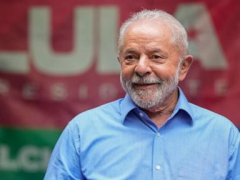BELEM, Brazil — With a spotlight on the Brazilian Amazon, where agriculture drives a significant chunk of deforestation and planet-warming emissions, many of the activists, scientists and government leaders at United Nations climate talks have a beef. They want more to be done to transform the world’s food system.
Protesters gathered outside a new space at the talks, the industry-sponsored “Agrizone,” to call for a transition toward a more grassroots food system, even as hundreds of lobbyists for big agriculture companies are attending the talks.
Though agriculture contributes about a third of Earth-warming emissions worldwide, most of the money dedicated to fighting climate change goes to causes other than agriculture, according to the U.N.’s Food and Agriculture Organization.
The FAO didn’t offer any single answer as to how that spending should be shifted, or on what foods people should be eating.
“All the countries are coming together. I don’t think we can impose on them one specific worldview,” said Kaveh Zahedi, director of the organization’s Office of Climate Change, Biodiversity and Environment.
Research has generally shown that a plant-based diet can be better for health and the planet. But many people in poverty around the world who are hardest hit by climate change depend on animal sources of protein for survival. People in higher-income countries have more options for a healthy diet without meat. But those people still tend to contribute more to climate change with their dietary choices.
“We have to be very, very aware and conscious of those nuances, those differences that exist,” Zahedi said.
When world leaders gather every year to try to address climate change, they spend much of their time in a giant, artificial world that typically gets built up just for the conference.
One corner of COP30, as this year’s conference is known, featured the alternative universe of AgriZone, where visitors could step into a world of immersive videos and exhibits with live plants and food products. Those included a research farm that Brazilian national agricultural research corporation Embrapa built to showcase what they call low-carbon farming methods for raising cattle, and growing crops like corn and soy as well as ways to integrate cover





